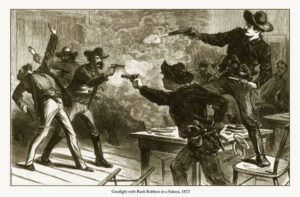Writing a clear and compelling post-conference report is as vital as the flawless execution of the meeting itself. The finished piece builds your conference history and showcases your skills, yet many planners dread getting this final task done on an event that’s been in the works for months and, in some instances, years.
The common excuse is “I don’t have the time” or “my boss isn’t going to read the report anyway.” But it begs the following questions: How will your manager learn about the meeting’s success? How will the company appreciate your abilities and the skills required to pull all the complexities of meeting planning into a spectacular event?
A post-con report summarizes and showcases every element of your work and demonstrates the results of the meeting. It provides complex data to determine if a meeting should continue to be held, improved upon, or eliminated. Armed with a solid report, you can better manage and control your overall meeting systems, discovering new ways to improve the speed and flow of details.
You need to record the history of each event. How many of us remember the details of a meeting we planned a year ago? What did the evaluations tell us? What did the focus groups and committees report to us in the post-con meetings? What were the final results of our financial report? Did we achieve our goals? How did we market the meeting?
A post-con report provides the facts when we reopen the file to plan for the following year.
The report answers the tough questions you may be asked about the success of the meeting and the areas requiring improvement: What was the return on investment for the company, the stakeholders, and the meeting planning department? Were the attendees satisfied with the meeting, and why? Was the location convenient for attendees? What were the highlights of the site? Can the failures be fixed? What aspects of the meeting worked? Should the meeting be retained or eliminated? The report should summarize information and facts, not emotions, to persuade change and move others into action.
Components of a Post-Con Report
1. First, determine who will read your report and what information is essential to them. Will it go to the CEO, senior management, board members, sales executives, or volunteers? You may be the only reader. Whoever sees it may be interested in something other than the extensive detail you deem essential. Ask what they would like you to report after the meeting. Once you know your audience, develop an outline for the report. Could you place the data immediately as you collect it in a folder?
2. Match the culture of your organization or your client. Does your audience prefer a one-page summary in a memorandum format, a lengthy document with appendices and color charts and graphs, or a five-minute PowerPoint presentation? If you’re covering all the areas below, create a cover page with your name, date, the meeting name, and your company’s brand.
3. An executive summary contains the essential elements of the whole report, offering conclusions and highlights from the following material. While it is the first and only section your audience will read, it should be written last. It needs to contain the original material. Do not simply copy excerpts from the report and place them in summary.
4. Listing the staff names, roles, and responsibilities of the meeting planning staff is critical to showcase your department’s talents and abilities. Also, it is wise to include detailed timelines, demonstrating the hours and coordination involved in your work.
5. Many organizations use volunteers. Listing their names, roles, and responsibilities highlights their contributions to the general meeting.
6. The meeting agenda needs to be summarized in a short paragraph reviewing the theme and the program plan. The detailed schedule is placed in the appendix.
7. Demographics may particularly interest your company, especially the marketing department. Answer the following: Was there an increase or decrease in the number of attendees, and why? Where did the attendees come from? Are attendees all employees? If not, why not? Was there minority participation or participation from any other group that may be important to the company? How did attendees hear about the meeting?
8. There are numerous types of evaluations for every part of a meeting. An overall assessment communicates the attendees’ impressions of the entire event. Specific evaluations for speakers, special workshops or receptions, vendors, and meal functions can be designed and individually summarized in this section. A summary of issues surrounding contracts and negotiating points is quite helpful when considering whether or not to return to a property or city in the future. Notes about vendors and third-party suppliers offer a plethora of information as well.
9. Having risk and crisis management plans in place is critical. Was the crisis management plan implemented? Much of this information is confidential and cannot be released to all of your readers. Ask the significant stakeholders where certain information should go—highlight critical situations within the report. The detailed plans are to be placed within the appendix.
10. Include a summary of face-to-face, post-con meetings. There are two types of face-to-face meetings: formal and informal. Being frank and direct when speaking with a meeting planner one-on-one is human nature. When the same person is in a group meeting, they evaluate who is in the room and are careful with their statements. Conducting post-con meetings with the site representatives, exhibit company, board members, executives, meeting planning staff, and planning committee members are traditional.
11. Marketing documentation such as publicity materials, photographs, press clippings, magazine articles, social media impressions, and a list of reporters in attendance is critical for your marketing strategy for next year.
12. The budget report begins with a summary of the overall financial strategies followed by a listing of procedures, activities, a savings chart, a spend management report, and the buying decisions of attendees.


Average Rating